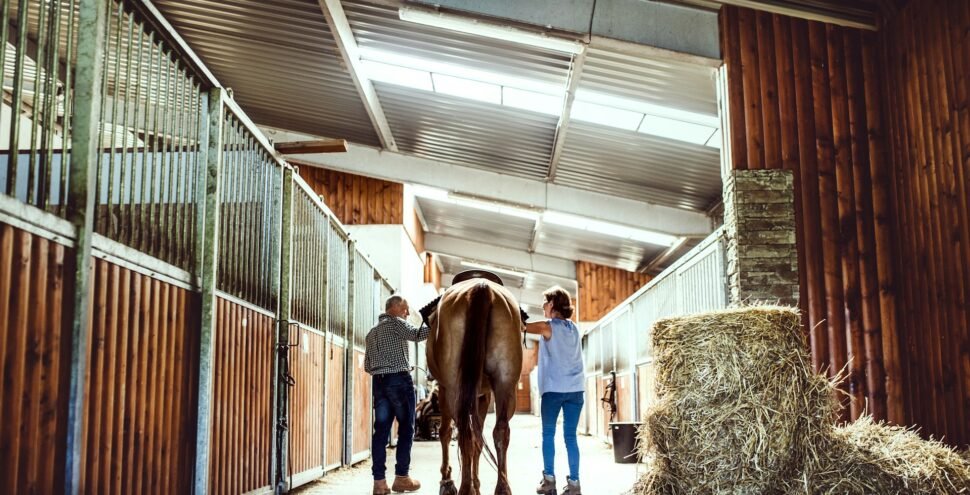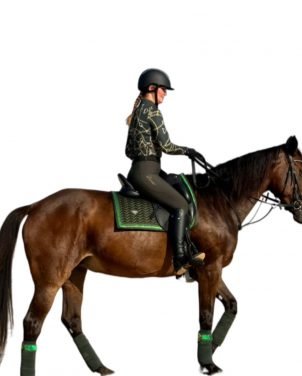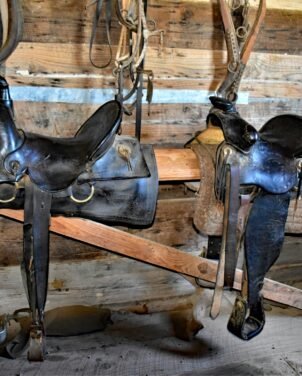Training a horse can be an incredibly rewarding experience, especially for beginners looking to build a strong bond with their equine companion. By incorporating fun and engaging exercises into your training routine, you can not only teach your horse important skills but also create a trusting and enjoyable relationship along the way.
Starting with groundwork is essential, as it sets the foundation for all other training activities. Simple exercises on the ground help your horse understand basic commands and signals, building trust and communication between you both. Groundwork is also a great way to start interacting with your horse, especially if you’re new to horse training.
As you progress, mastering basic riding skills becomes important. These exercises are designed to help you and your horse enjoy riding sessions together. Learning to ride effectively ensures that both you and your horse are comfortable and confident, making each ride a positive experience.
Introducing new and fun obstacles can make training sessions more interesting and stimulating for your horse. Obstacles not only challenge your horse’s agility and problem-solving skills but also keep them engaged and willing to learn. Lastly, advanced exercises enhance communication, allowing you and your horse to work as a seamless team, ready to tackle any challenge together.
Building Trust with Groundwork Exercises
Before hopping into the saddle, building a trusting relationship with your horse through groundwork is essential. Groundwork exercises help your horse understand basic commands, making them more responsive and willing to follow your lead. Here are a few exercises to get you started:
1. Haltering and Leading: Begin by practising leading your horse with a halter and lead rope. Encourage your horse to walk beside you, stopping and starting as you do. This simple exercise helps in teaching your horse to follow your cues and builds a sense of partnership.
2. Backing Up: Stand facing your horse and apply gentle pressure to the lead rope. Use verbal cues such as “back up” while stepping towards them. This exercise teaches your horse to respect your space and understand verbal commands.
3. Flexing and Yielding: Gently encourage your horse to flex their neck towards you when you apply light pressure on the halter. This exercise improves flexibility and helps your horse become more responsive to your cues.
4. Desensitising: Introduce your horse to new objects and sounds gradually. This might include tarps, plastic bags, or flapping flags. The goal is to make your horse more comfortable with unfamiliar items, building their confidence and trust in you.
Regularly practising these groundwork exercises will establish a strong foundation of trust and mutual respect, making future training more effective and enjoyable for both you and your horse.
Mastering Basic Riding Skills
Once you’ve built a solid foundation with groundwork, it’s time to move on to basic riding skills. These exercises will help you and your horse become more comfortable and confident during rides.
1. Mounting and Dismounting: Practice mounting and dismounting your horse calmly and safely. Make sure your horse stands still and waits for your cue before moving. This reduces stress and ensures a smooth start to your ride.
2. Walk, Trot, and Canter: Begin with walking, using gentle rein and leg cues to guide your horse. Once comfortable, progress to trotting and then cantering. Practise transitions between these gaits to improve your horse’s responsiveness to your cues.
3. Rein Control: Work on steering your horse using direct rein control. Rein control exercises, like figure-eights or circles, teach your horse to respond to your hand movements and helps improve your steering accuracy.
4. Stopping and Backing Up: Practise stopping your horse smoothly using a combination of rein and verbal cues. After stopping, ask your horse to back up using gentle rein pressure and verbal commands. This reinforces your horse’s obedience and enhances their response to your cues.
5. Riding Transitions: Practising transitions between different gaits, such as from walk to trot or trot to canter, helps your horse remain attentive and responsive. Smooth transitions build a more balanced and well-trained horse.
Mastering these basic riding skills sets a strong foundation for more advanced training. It ensures that you and your horse can enjoy safe and harmonious rides, paving the way for more fun and challenging exercises in the future.
Introducing Fun and Engaging Obstacles
Incorporating obstacles into your training routine can make sessions more fun and stimulating for your horse. Obstacles challenge your horse’s agility, problem-solving abilities, and build their confidence.
1. Cavaletti Poles: Set up a few poles on the ground for your horse to walk or trot over. Start with one or two poles, then gradually add more. This exercise helps improve your horse’s coordination and balance.
2. Barrels and Cones: Arrange barrels or cones in patterns such as serpentine or figure-eight formations. Guide your horse through these patterns, which helps enhance their manoeuvrability and responsiveness to your cues.
3. Jumping Small Fences: For slightly more advanced horses, introduce small jumps. Begin with low fences and gradually increase the height as your horse becomes more comfortable. Jumping helps build your horse’s physical strength and makes training sessions more exhilarating.
4. Tarp Walk: Lay a tarp flat on the ground and encourage your horse to walk over it. This can be a bit scary for some horses, but with patience, it will build their trust and courage, learning to face unfamiliar objects.
5. Water Trays: Create a shallow water obstacle using a tray or a small pool. Encourage your horse to walk through, helping them become more adaptable to different environments.
Regularly changing the layout and type of obstacles keeps your horse interested and makes training sessions more dynamic. These exercises also improve your horse’s agility and problem-solving skills, making them more versatile in different riding conditions.
Enhancing Communication through Advanced Exercises
Once your horse is comfortable with basic skills and obstacles, you can start working on more advanced exercises to further enhance communication and teamwork. These exercises encourage a deeper connection and understanding between you and your horse.
1. Lateral Movements: Practise exercises like leg yields, shoulder-ins, and haunches-ins. These movements require your horse to move sideways while keeping their body aligned, which improves balance, flexibility, and responsiveness to your leg cues.
2. Collection and Extension: Work on collecting and extending the gaits. Collection involves shortening the stride while maintaining energy and impulsion, whereas extension requires lengthening the stride. These exercises teach your horse to adjust their movement according to your cues.
3. Flying Lead Changes: Once your horse is proficient in basic cantering, introduce flying lead changes. This involves changing leads mid-canter without breaking stride. It’s a more challenging exercise that sharpens your horse’s agility and response to subtle cues.
4. Backing in a Circle: This exercise combines backing up with steering. Guide your horse to back up in a circle, which improves their control and ability to respond to rein cues precisely.
By practising these advanced exercises, you develop a stronger, more refined communication system with your horse. This leads to a more harmonious partnership, making both everyday riding and competitive events more enjoyable and successful.
Conclusion
Training a horse is a journey that requires patience, consistency, and a variety of exercises tailored to both the horse’s and rider’s abilities. By starting with groundwork to build trust, moving on to mastering basic riding skills, incorporating fun obstacles, and finally enhancing communication with advanced exercises, we enrich the training process and strengthen our bond with our equine friends.
Each exercise plays a crucial role in the development and progression of your horse’s training programme. From the initial trust-building activities to the advanced communication exercises, these steps ensure a holistic approach to training that benefits both horse and rider.
Regularly reviewing and adjusting the training routine keeps it fresh and engaging for your horse. It’s also essential to remain attentive to your horse’s reactions and progress, adapting the exercises as needed to suit their individual needs.
For expert advice and premium equestrian products that elevate your training experience, explore Diamont Equestrian. Discover how our equestrian store can help you and your horse achieve harmony and excellence in your training journey.





